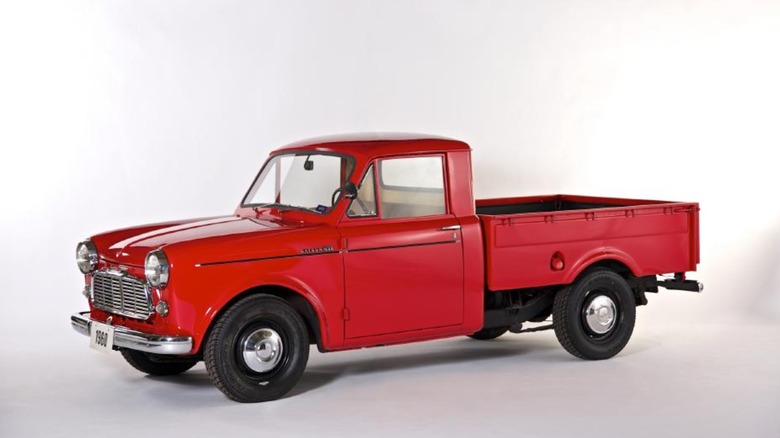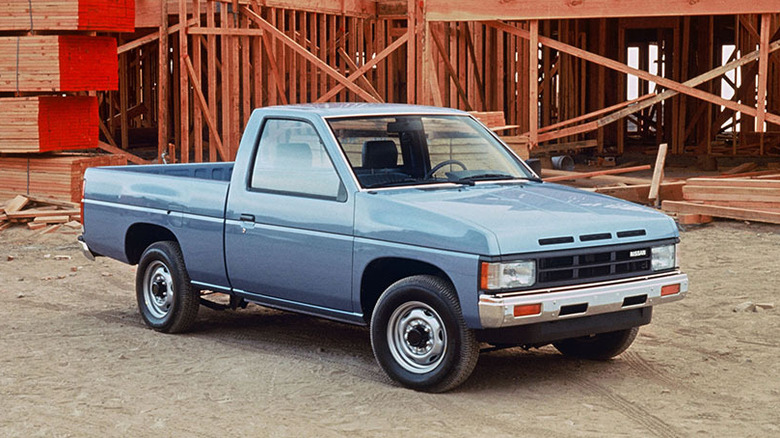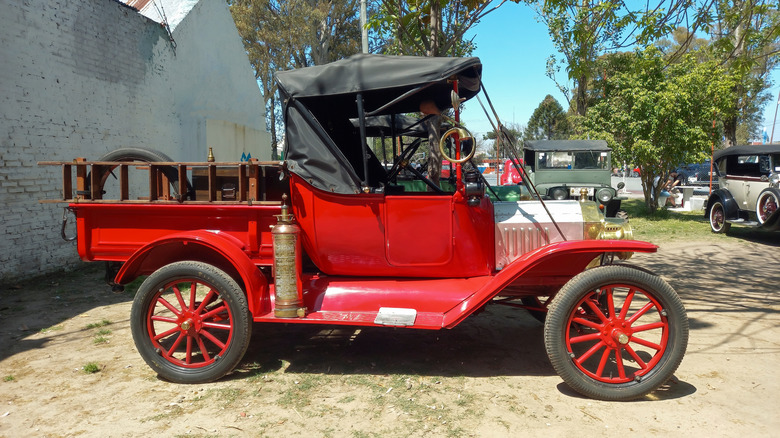How The First Small Pickup Truck Ever Sold In The US Paved The Way For A Beloved Car Brand
In 1958, a small red Datsun pickup rolled into the Los Angeles Auto Show. It was the first compact truck ever sold in the U.S., and it would quietly rewrite expectations for what a truck could be. Known as the Datsun 220, this little workhorse shared a chassis and engine with the Datsun 210 sedan, an inline-four nicknamed the "Stone Engine" for its durability. Nissan (still using the Datsun name in America at the time) had launched both models in Japan the year before. When the 220 and 210 landed stateside, they weren't just two more imports. They were proof that Japan could build vehicles suited for American roads, and more importantly, for American buyers.
Nissan's early success in off-road endurance racing, like the brutal 1958 Mobilgas Trial in Australia, helped boost confidence in its engineering. Both the 210 sedan and the 220 truck shared the same durable platform that proved itself in one of the hardest rallies on Earth. The 220 was small, but it had the bones of something much bigger for this beloved car brand.
From red pickup to full-line legacy
The impact of that little red pickup didn't fade. It launched a 60-plus year journey that shaped Nissan's identity in America. Trucks like the Nissan Hardbody, introduced in the 1980s, carried the same DNA: simple, strong, and built for real-world use. That Hardbody would later dominate the Baja 1000 and become the first truck designed by Nissan's U.S.-based design team. Today's Frontier still carries echoes of the Hardbody's form factor and mission.
Even in its advertising, like the 2022 campaign "60 Years in 30 Seconds," Nissan leaned hard into its pickup legacy, spotlighting that original 220 and tracing the arc through the 240Z, Hardbody, and modern Frontier.
It all started with a truck nobody thought would matter. But the Datsun 220 did what no focus group could predict: It earned trust one delivery, one job, and one sale at a time. And it laid the foundation for Nissan to become a serious player in a segment once ruled entirely by American brands. Even to this day, the 220 remains one of the best-looking Datsun pickup trucks ever produced. Nissan further boosted its brand in the U.S. with a generation of Z cars as well as the GT-R, which may be making a comeback.
A brief history of the pickup truck
When Japanese automakers entered the U.S. market in the late 1950s, the pickup truck had long been a part of American culture already. The story started in 1925 when Ford introduced the Model T Roadster with a pickup body. It was the first factory-built pickup. Farmers and tradesmen had been converting Model Ts for years, so Ford saw an opportunity and delivered a ready-made solution. Over time, pickups became more refined, and by the 1940s, the Dodge Power Wagon added four-wheel drive to the mix, transforming the pickup into a true off-road utility vehicle.
In the 1950s and '60s, manufacturers started experimenting with design. Chevrolet's Cameo Carrier added car-like style and comfort. Volkswagen, Jeep, and Ford explored compact, forward-control pickups to improve maneuverability in urban areas. Ford's 1957 Ranchero took it even further, blending the comfort of a car with the bed of a truck. That fusion would eventually evolve into models like the Chevrolet El Camino.
Through the decades, the pickup transformed from a bare-bones workhorse into a highly customizable, often luxurious, everyday vehicle. Whether you wanted a stripped-down hauler or a muscle truck like the GMC Syclone or Ram SRT-10, there was a pickup for you. Today, trucks continue to evolve, but their working-class DNA remains.


